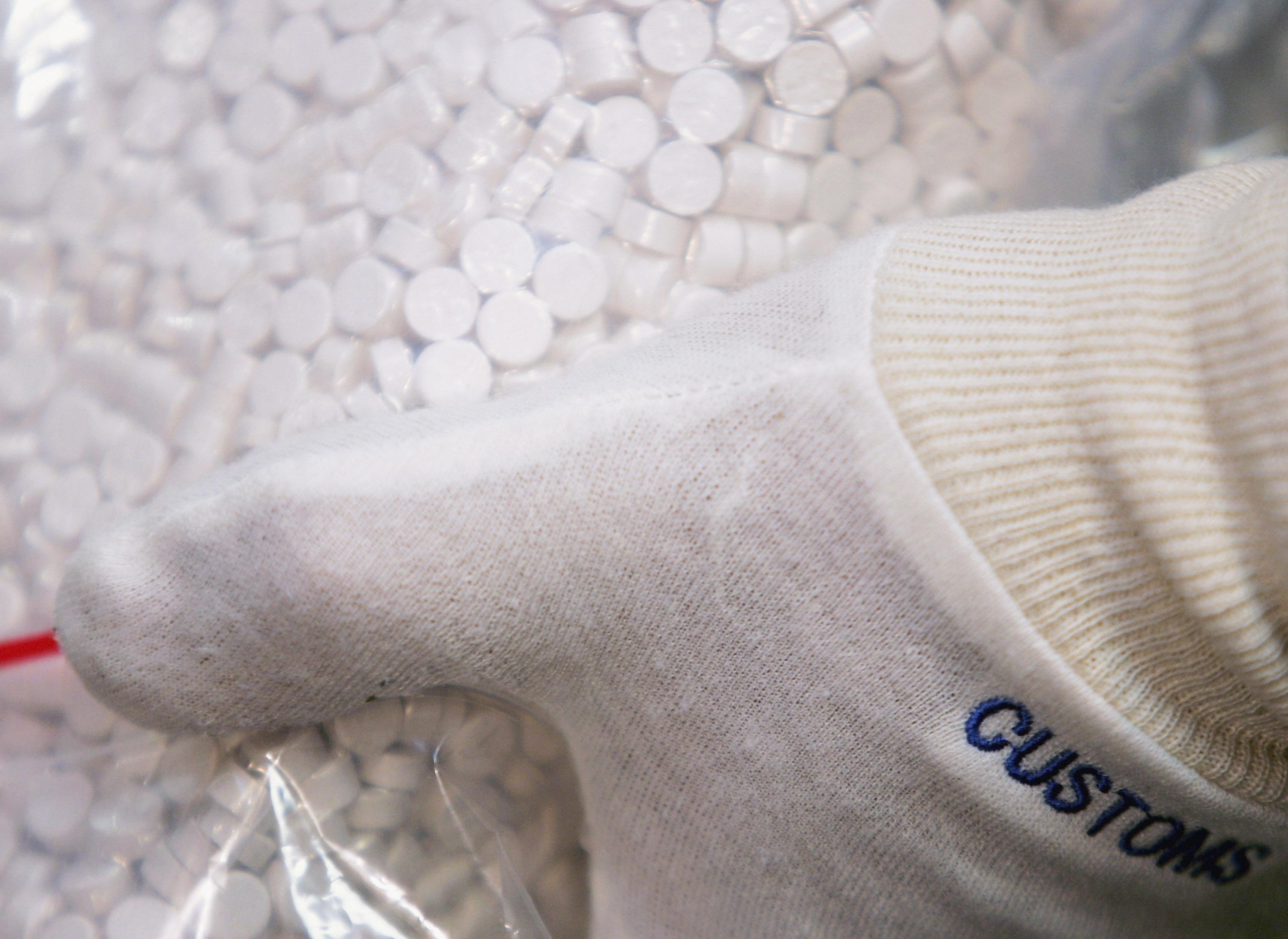Late last year, Playboy contributor Frank Owen wrote a good piece rebutting the idea that the synthetic stimulants known as “bath salts” caused a Miami man to attack a passerby and start eating his face. (Tests showed that the man, Rudy Eugene, had nothing stronger than marijuana in his system during the incident.) Now Owen is back to report on another drug panic, this one having to do with the club drug “molly,” or powdered MDMA. Two people died this summer at a music festival in New York City after overdosing on molly, and, since then, the drug and its alleged dangers have been all over the news. Molly is marketed as a purer version of Ecstasy, another MDMA drug. But as Owen and co-author Lera Gavin report in Playboy, “molly is not a new drug (night crawlers were snorting powdered MDMA as far back as the early 1980s), and the form the drug takes (pills, powder, capsules) has little bearing on its purity.” In fact, the substances being sold as pure molly are often anything but.
MDMA was first synthesized by a German chemist in the early 20th century, and starting in the 1980s, was widely distributed in tablet form as a recreational drug called Ecstasy. (Users reported feeling a life-affirming sense of euphoria.) Molly is just Ecstasy with a different name, Owen and Gavin write, a marketing trick from “drug dealers rebranding a product that had gotten a bad reputation because it was so heavily cut with other substances.” Unlike Ecstasy, molly is geared to “discerning consumers who don’t mind paying a premium to ensure quality.” But, like Ecstasy before it, the capsules being sold as molly are rarely pure MDMA. Instead, they are often cut with any number of substances: aspirin, caffeine, bath salts, methamphetamine. Sometimes, molly contains no MDMA at all.
Owen and Gavin went out to buy molly three times in Miami and New York, and then subjected the samples to chemical testing. In Miami, they found that the capsules sold as molly really contained bath salts and a methamphetamine/MDMA mixture, respectively. Their experiences get at the real story of the molly invasion: that the drug is not necessarily dangerous because of its unprecedented potency, but because of its variable composition. Users have no idea what they’re actually putting in their bodies, and that’s a problem.
After testing a substance that a reputable New York City dealer claimed was “some of the best molly money could buy,” Owen and Gavin found that, in addition to MDMA, the pill also contained cocaine, methamphetamine, and an unidentified opiate. “That’s three stimulants piled on top of one another with what was probably an oxycodone chaser,” Owen and Gavin write. “If that’s what is in molly in New York, no wonder kids are dropping dead.”
